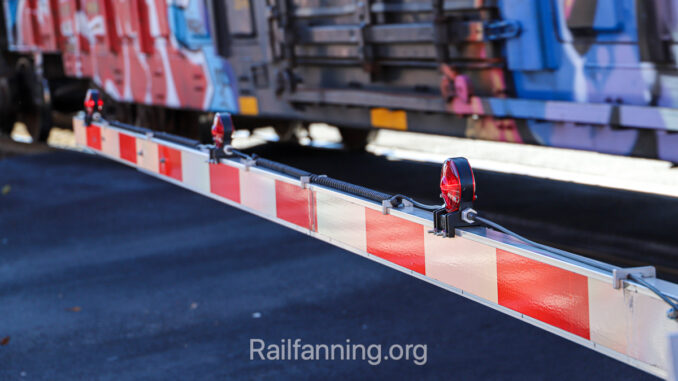
When you think of railroad tracks, what do you picture? If you think of tracks as a place to take a shortcut, a backdrop for photos or videos, or an opportunity to race a train, think again.
Here are some startling statistics: Every three hours in the U.S., a person or vehicle is hit by a train; and in Georgia, 69 people were killed or injured in 2021 in crossing collisions and rail trespassing incidents. How do we address this public safety issue?
This year my organization, Operation Lifesaver, celebrates its 50th anniversary of raising awareness about the need for caution near railroad tracks and trains in the U.S. Our mission is to save lives by helping people avoid these incidents in their communities. Over the past five decades, Operation Lifesaver and its safety partners have helped reduce railroad crossing incidents by 84 percent. But there is more work to do.
Operation Lifesaver’s trained volunteers offer free in-person and virtual safety presentations to any audience including photographers, professional drivers, school-aged children, school bus drivers, new drivers and community groups. There’s also a free program specifically designed for first responders to facilitate effective and safe ways to respond to and investigate incidents near railroad tracks and trains.
You can help stop track tragedies in your community by knowing the facts, making safe choices and sharing rail safety messages.
Consider these facts:
- Trains are quieter and faster than you think — only trains belong on the tracks.
- Trains always have the right of way. Never try to beat a train.
- Walking, exercising, biking and taking photos on the tracks is illegal and dangerous.
- Railroad tracks, railroad cars and the areas next to them are private property.
- The average freight train travelling 55 mph can take a mile or more to stop – the length of 18 football fields.
- Trains cannot stop quickly and cannot swerve.
- Multiple tracks may mean multiple trains.
Here are a few safety tips to share with your family and friends.
- Never walk on or too close to railroad tracks and never use the tracks as a shortcut.
- Look and listen for trains as you approach any railroad crossing — avoid distractions and obey all signs, warning lights and gates.
- Always expect a train on any track, at any time, in any direction.
- Always cross railroad tracks legally and safely at designated crossings and obey warning signs and signals.
- Avoid getting stuck: Before crossing, be sure there is space on the other side to completely clear the tracks and because trains overhang tracks, leave at least 15 feet between the front and rear of your vehicle and the nearest rail.
- If your vehicle gets stuck or stalls at a crossing, get everyone out and far away immediately, even if you do not see a train. Find the Blue and White Emergency Notification System (ENS) sign at the crossing, call the number on the sign and share the crossing ID number with the dispatcher. No sign? Dial 911.
During Operation Lifesaver’s 50th anniversary year – and every year – let’s work together to #STOPTrackTragedies. With your help, we can make preventable railroad crossing and trespassing incidents a thing of the past.

